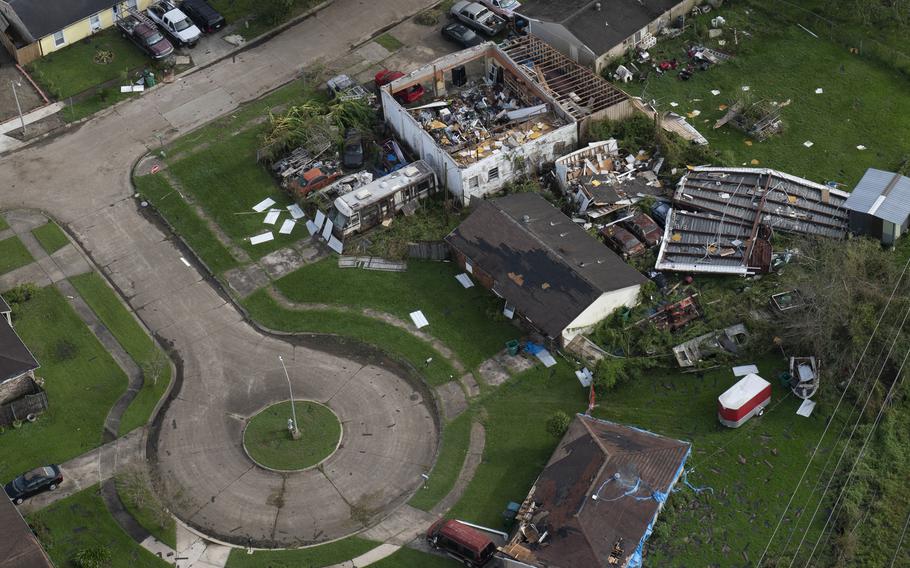
The aftermath of Hurricane Ida in Houma, La., in 2021. Preparing a home for extreme weather can help reduce risks to property. (Michael Robinson Chavez/For The Washington Post)
After a hot stormy summer, homeowners are more aware than ever of the toll that extreme temperatures, high winds, torrential rain and power outages can have on their families and homes. Home buyers naturally place a higher priority on the location and layout of a home but given the increasing instances of extreme weather and the high cost of repairs, they may want to take a closer look at the property’s resilience to climate change.
“Properties that never had water issues are now experiencing them because of the more severe weather patterns we’re experiencing,” said Tony Cammarota, a real estate agent with RE/MAX Distinctive in Washington.
While water issues can be hazardous and costly to repair, flying debris such as tree branches can damage roofs and windows. But there are steps buyers can take to evaluate risk before buying and that homeowners can take to mitigate risk before a storm.
Know the house’s past and present condition
Home inspections, whether a full two- to three-hour evaluation of a house or an hour-long preoffer inspection, are highly recommended, Cammarota said.
“Buyers should follow the inspector to learn how systems work, how to maintain their home and to look for signs of previous damage,” he said.
Leslie Chapman-Henderson, president and CEO of the Federal Alliance for Safe Homes (FLASH), based in Tallahassee, recommends that buyers and homeowners find out which building code was used when their home was built with the InspecttoProtect.org tool.
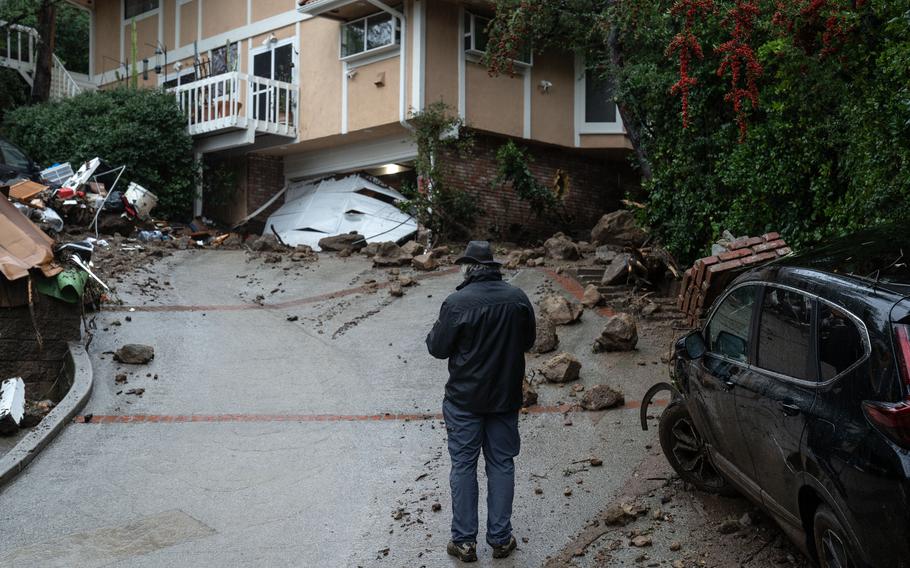
Rocks and debris litter streets and driveways along Fryman Canyon in Studio City, Calif., after an atmospheric river blasted central and Southern California in February. (Michael Robinson Chávez/For The Washington Post)
“The building code is like a cookbook that tells you what ingredients and cooking methods were used to build your house,” Chapman-Henderson said. “The site will show you what upgrades to consider depending on when it was built.”
For example, older codes allowed roofs to be attached with an angled nail, while new methods use straps, metal clips and roof trusses, she said.
“You can also research the history of local disasters such as floods, tornadoes and hurricanes that have impacted the house,” Chapman-Henderson said. “Now, though, severe thunderstorms sometimes cause damage that exceeds other insurance claims because of climate change and an aging housing stock.”
She recommends talking to neighbors when visiting a house and doing internet research on news reports about the neighborhood.
Tour the home
Whether you’re purchasing a home or already own one, you can download the FLASH Buyers Guide to Resilient Homes and print checklists to share with your home inspector or a contractor.
Start on the outside and check to see what materials were used for your home, suggests Rob Farrie, vice president of construction for Anthony Wilder Design/Build in Cabin John, Md.
“Wood products tend to rot, but newer homes are built with cementitious board siding or Boral ash siding that are more resistant to climate impacts and require less maintenance,” Farrie said. “You also want to check the foundation coating and drain board system to make sure it channels water to a French drain.”
Foundations deteriorate over time depending on the material, Farrie said.
“You want to look inside at an unfinished basement to see if you can see effluence such as white streaks or soil streaks on a cinder block or cement wall,” he said. “It’s harder to see that in a finished basement, so that’s when it’s really important to look at the grading outside to make sure moisture is diverted away from a house.”
Landscaping issues can contribute to a home’s resilience to storms.
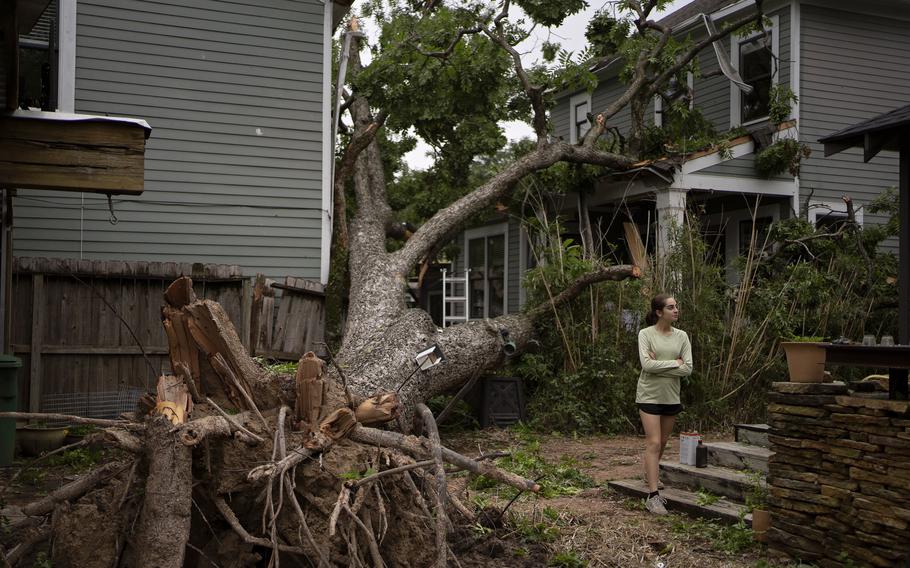
Anita Wolfsteiner walks through a neighbor’s yard in Houston after Hurricane Beryl in July. Not only can branches cause roof damage, but as trees grow, their root systems can also damage pipes and create plumbing issues, says Tony Cammarota, a real estate agent with RE/MAX Distinctive in Washington. (Danielle Villasana/For The Washington Post)
“You need to make sure the trees are healthy and that you don’t have branches overhanging the roof or too close to windows,” said Marnie Oursler, owner of Marnie Oursler Custom Homes in Bethany Beach, Del. “The grading should divert water away from the house and so should the gutters. You can also add gutter guards to improve their functionality.”
In addition to branches causing roof damage, as trees grow, their root systems can damage pipes and create plumbing issues, Cammarota said.
Check out the roof warranty with the sellers and have a home inspector look for water damage and to make sure the roof is installed properly, Oursler said.
Upgrade your home’s resilience
When you’re building or remodeling a home, improvement projects can increase your household’s comfort during extreme temperatures and reduce weather-related impacts.
“Houses are often designed with the expectation that rain will come straight down, but heavy downpours are often sideways, so we use drainage house wrap between the sheathing and the drywall with a self-sealer to reduce the chances of water damage,” Oursler said. “You should also make sure the roof shingles are secured properly and that there are no gaps in the siding or around the windows and doors that could let water seep inside.”
Oursler recommends watching the water flow during a heavy downpour to make sure it doesn’t enter your home.
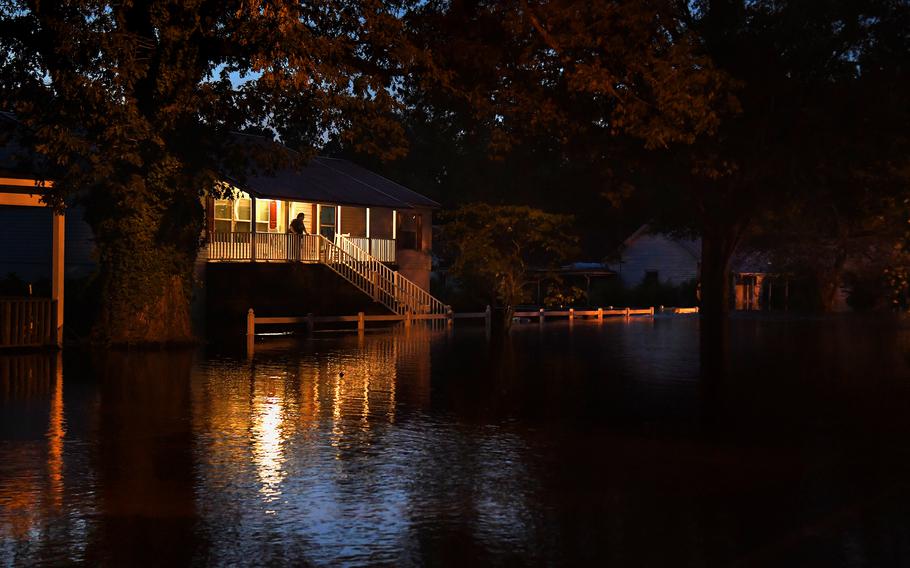
Flooding in Seven Springs, N.C., after Hurricane Florence in 2018. (Michael S. Williamson/The Washington Post)
“If you’re adding hardscape to a yard, you can choose eco-friendly products that allow water to penetrate the surface with drainage underneath that diverts the water away from the house,” Oursler said.
New homes are built with a sump pump to prevent water infiltration, Cammarota said. Depending on the site, a sump pump can be added for about $15,000.
“You may want to install a generator to make sure your sump pump continues to work during an extended power outage,” he said.
If you’re in a flood-prone area, Chapman-Henderson recommends using a platform to elevate appliances from the lower level of the house. Moving electrical sockets higher on the wall can prevent water infiltration.
“You should also elevate any fuel tanks outside and make sure they can’t break free in a storm,” Chapman-Henderson said.
She recommends reviewing FEMA’s Flood Smart tool, which shows that even a small amount of water that infiltrates your home can cause thousands of dollars or damage.
“We’ve recently done research that shows how important it is to board up your garage door or install a brace on it before a hurricane,” Chapman-Henderson said. “We discovered that if garage doors fail, the roof is more likely to fail as well in high winds.”
To mitigate extreme heat or cold, you may want to upgrade to a high-efficiency heating and air conditioning system.
“It’s illegal to use a type of Freon that older air conditioning systems use, so you may have to get a new system,” Cammarota said. Typically, that costs $9,000 to $15,000 but will be more efficient and reduce utility bills.
Adding spray foam insulation to an attic or during a renovation can help your system work more efficiently and make your home stay comfortable longer during a power outage, Farrie said.
“In a house we remodeled recently the second floor was 74 degrees and the attic was 95 degrees,” Farrie said. “We added spray foam insulation to the attic and the temperature difference went down to five degrees.”
Chapman-Henderson recommends weatherizing your home with caulk around all windows, doors and flashing.
“An attic solar fan costs about $350 and can reduce the stress on your air conditioning in summer by keeping your attic cooler,” she said. “In the winter, it can reduce moisture and prevent ice dams that occur when hot and cold air collide.”
Shutters and blackout curtains can also mitigate extreme temperatures, she said.
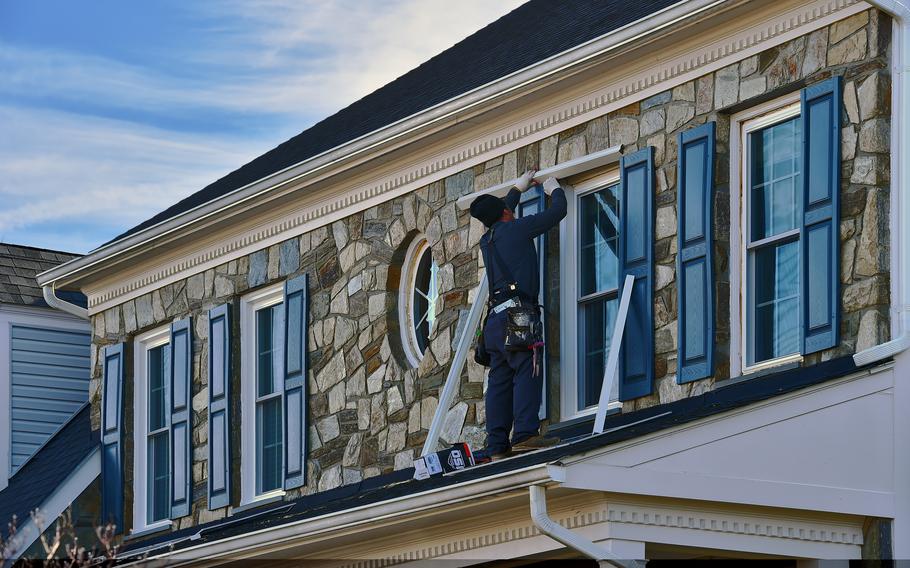
Although costly, replacement windows can provide insulation and strength. (Bill O’Leary/The Washington post)
A more costly option but worthwhile if your windows and doors are older is to replace them with newer glass that offers better insulation and strength.
While shopping for new counters or upgrading your floors may be more fun, taking the steps to make your home more resilient to climate impacts can keep you and your family safe, reduce repairs and potentially avoid insurance claims.